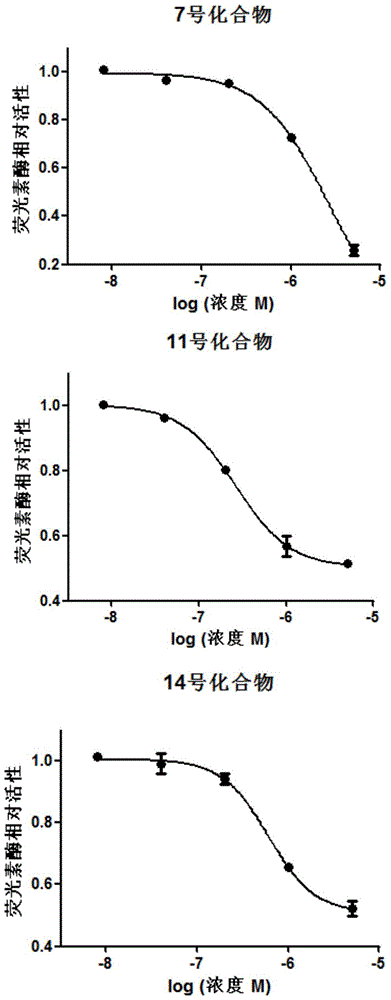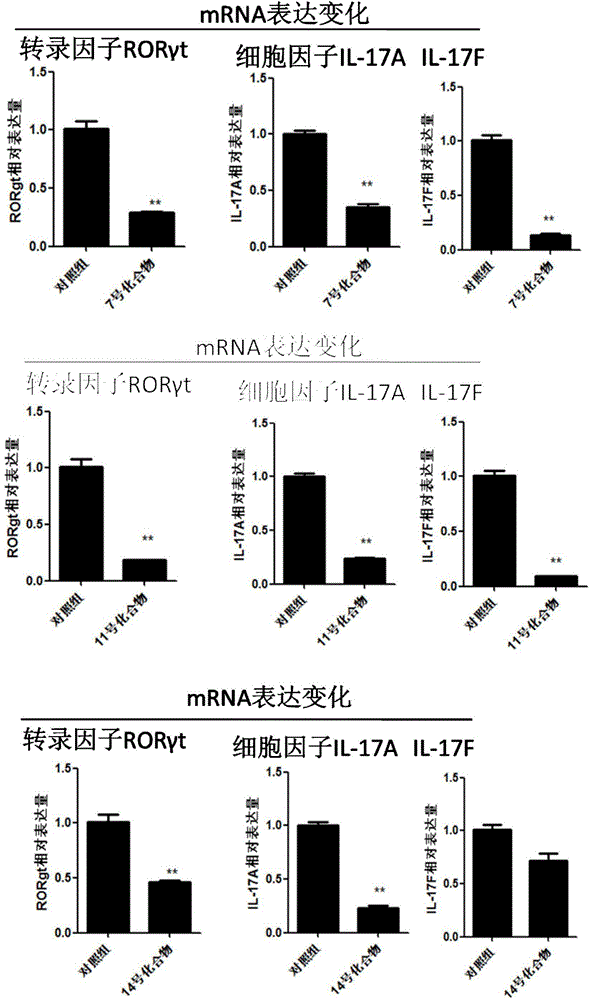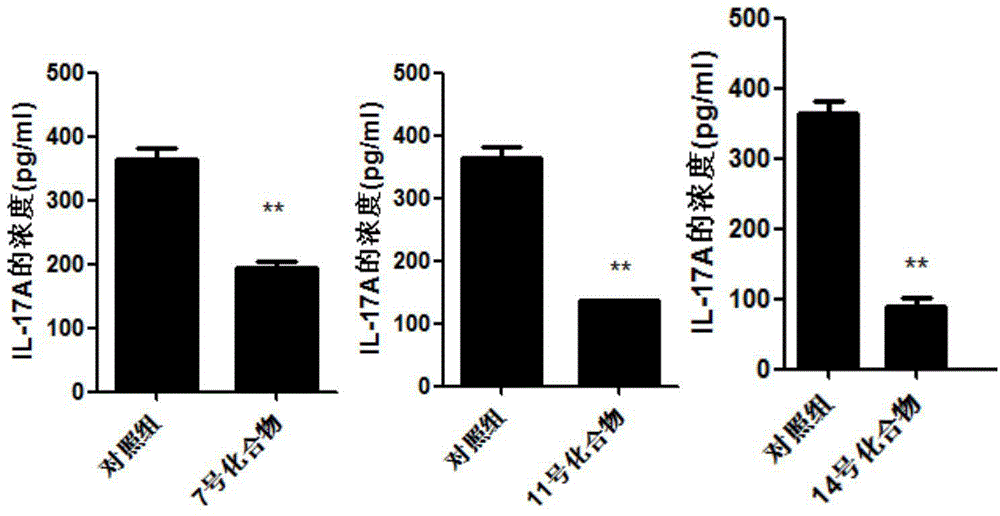Application of 4N heterocyclic compound as inhibitor for Th17 cell differentiation
A technology of heterocyclic compounds and inhibitors, applied in the application field of 4N heterocyclic compounds as Th17 cell differentiation inhibitors, can solve the problems of reducing Th17 cell differentiation ability, weakening clinical symptoms, poor selectivity, etc.
- Summary
- Abstract
- Description
- Claims
- Application Information
AI Technical Summary
Problems solved by technology
Method used
Image
Examples
Embodiment Construction
[0033] The 4N heterocyclic compound biphenyl compound described in the application, such as compound 7, 11 and 14, can be purchased from Enamine company, and other similar compounds can be purchased on the basis of the obtained compound, and the existing technology is used for simple modification to obtain Or directly entrust a synthesis agency to synthesize.
[0034] In the following experiments, compound 7, compound 11 and compound 14 refer to , and .
[0035] The screening system for luciferase activity based on transcription factor activity can be constructed according to existing methods. Or build it as follows:
[0036] Material:
[0037] The cell lines Jurkat and 293T were preserved in our laboratory; the bacterial strain DH5α was donated by Professor Ma Runlin, Institute of Genetics, Chinese Academy of Sciences, Beijing; the restriction endonuclease was purchased from Fermentas Company of the United States; the DNA ligase was purchased from NEB Company of the...
PUM
 Login to View More
Login to View More Abstract
Description
Claims
Application Information
 Login to View More
Login to View More - R&D
- Intellectual Property
- Life Sciences
- Materials
- Tech Scout
- Unparalleled Data Quality
- Higher Quality Content
- 60% Fewer Hallucinations
Browse by: Latest US Patents, China's latest patents, Technical Efficacy Thesaurus, Application Domain, Technology Topic, Popular Technical Reports.
© 2025 PatSnap. All rights reserved.Legal|Privacy policy|Modern Slavery Act Transparency Statement|Sitemap|About US| Contact US: help@patsnap.com



